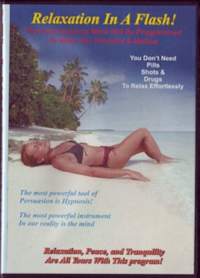|
|
Do you have wintertime blues? SAD is a form of depression known as Seasonal Affective Disorder. Learn about the symptoms of SAD, how this disorder can affect you, and what treatments are available.
 Are you worried that your bout with wintertime blues is lasting longer, or is more severe than normal? How do you know whether this is just a short-term problem, or whether you might have a serious case of Seasonal Affective Disorder (SAD)? Should you get medical help? Learn about the symptoms of SAD, how this disorder can affect you, and what treatments are available. Are you worried that your bout with wintertime blues is lasting longer, or is more severe than normal? How do you know whether this is just a short-term problem, or whether you might have a serious case of Seasonal Affective Disorder (SAD)? Should you get medical help? Learn about the symptoms of SAD, how this disorder can affect you, and what treatments are available.
Seasonal Affective Disorder is more than just feeling "down" when the weather is bad. SAD begins when the fall season begins to change to winter and the days become shorter. For most people, symptoms typically appear sometime between September and November. Moreover, because of the severity and consequences of SAD and other types of depression, doctors require extensive evidence of the condition before they are willing to make a definite diagnosis. Even though symptoms may be very severe, doctors do not usually diagnose a person with SAD until after he or she has experienced symptoms for at least three consecutive winters.
Those who are affected by this disorder begin to experience feelings of depression, decreased motivation, and tend to
sleep for excessive periods. They also develop a craving for carbohydrates or sweets. In addition, the majority of persons diagnosed with SAD also have immune systems that do not function adequately. Frequently, they find themselves becoming ill much more easily than people who do not suffer from SAD.
SAD can seriously affect a person's ability to function at work or school. This decreased
motivation can make it difficult for a person even to get out of bed and tend to normal activities. Sufferers find it difficult to participate in social situations, and even function at home. They frequently experience episodes of intense anxiety and irritability. Sometimes, symptoms become severe and disabling enough that people even consider suicide and have to be hospitalized for treatment.
Interestingly, women seem to have a higher rate of SAD than men do. Furthermore, this disorder seems to get better each year when spring arrives. In fact, by March or April, symptoms usually subside or disappear altogether - until the following autumn. This is true even in states that tend to be cloudy or rainy throughout the entire year. In fact, as many as one-fifth of the people diagnosed with SAD will eventually develop symptoms of bipolar disorder.
These sufferers primarily tend to be depressed in the winter months, but report normal moods during the remainder of the year. In some cases, however, people report experiencing instances of uncontrollable mood elevation, which is also called mania. Like any other type of depression, SAD can become quite severe and even disabling if not treated properly. Additionally, some people suffer from very mild forms of SAD; they may experience sleepiness, lack of motivation, and eating difficulties. These individuals, however, do not usually endure episodes of depressive moods or anxiety.
This type of depression is relatively rare in sunny regions such as Florida, southern California, and even Colorado. In contrast, people who live in states with a large number of cloudy days, such as Ohio, Michigan, or Washington are much more likely to develop this disorder. Residents of countries such as Finland, Sweden, and Ireland also struggle with seasonal depression.
Scientists have tried a number of different approaches to help people recover from this debilitating problem. They have experimented with exposing people to artificial light in an attempt to help them produce more serotonin and decrease depression symptoms. Researchers have also used medications such as antidepressants, as well as supplements, such as melatonin, to help treat these signs of depression. Many people who experience this condition also visit psychotherapists during those times when their symptoms are at their peak.
All of these approaches have been used with varying degrees of success. All, however, are much more expensive and time-consuming than two more recent, innovative techniques. consulting hypnotists have perfected the art of teaching both NLP and self-hypnosis strategies for depression. Using self-hypnosis, clients learn to talk themselves out of a depressive period and resolve their symptoms. These innovative therapies, hypnosis and Neuro-Linguistic Programming, have proven to have an astonishing amount of success in helping people to recover from, and avoid future episodes of SAD.
Summary: Seasonal Affective Disorder is a type of depression that returns every year at almost the same time. Only those who suffer from this illness can choose whether to continue to fight the symptoms alone, year after year, or to seek help in resolving this condition forever. Hypnotherapy and Neuro-Linguistic Programming for depression are two effective, innovative treatments that offer a rapid escape from depression without consuming excessive amounts of money or energy.
A
list of the common uses of hypnosis.
� 2008 By Alan B. Densky, CH. This
document may NOT be re-printed. All Rights Reserved.

Alan B. Densky, CH is an NGH certified consulting hypnotist. Since 1978, he has helped thousands of clients. He offers CDs for
hypnotic treatment for depression. Visit his Neuro-VISION NLP site for the
hypnosis article library, or watch his
free video hypnosis
collection.
|
|


